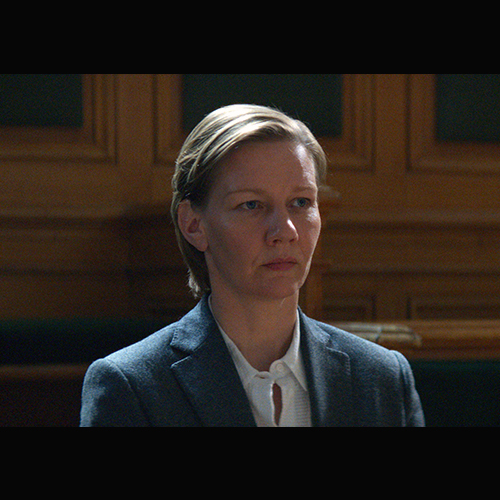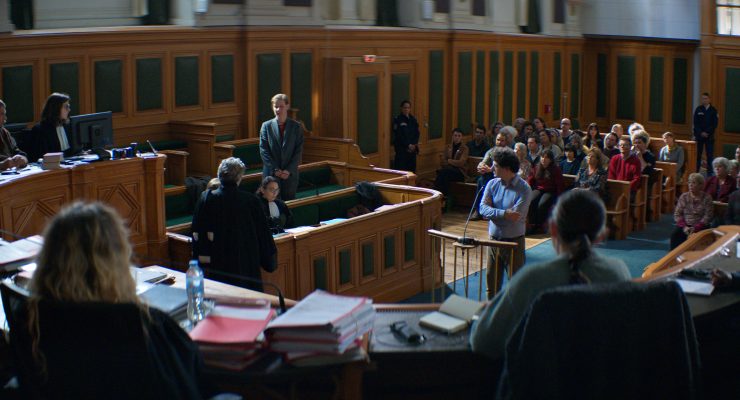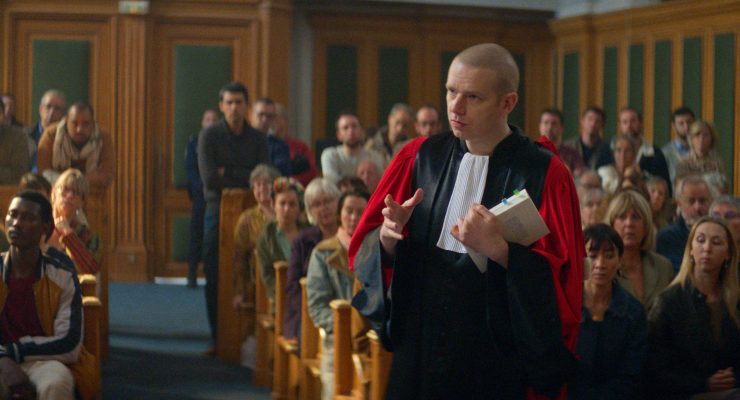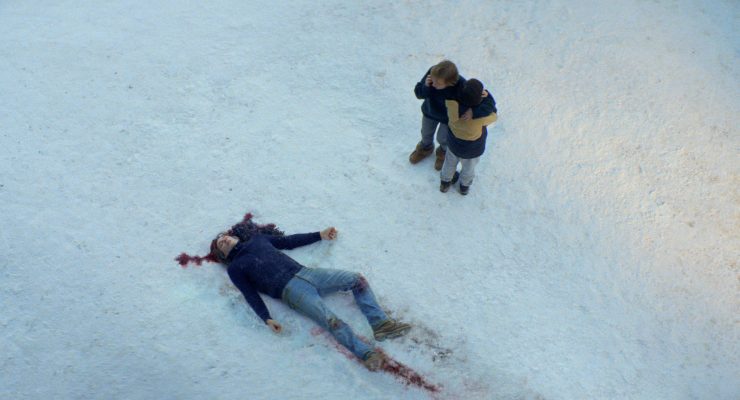Acquittal of a strong woman

Justine Triet’s feature film Anatomy of a Fall winning the Palme d’Or at Cannes last year seems to continue the trend that has taken hold at prestigious film festivals in recent years. It is not just that major awards are being given to female directors, deservedly or not.
It is as if female directors are taking revenge on the man for trampling on women for centuries through art, trying to ease their genetic trauma. The camera gives no rest even for a moment to the heroine of Audrey Diwan’s Happening, set in Venice in the 1960s when abortion was banned, constantly showing close-ups of her physiological and moral suffering, and men are declared guilty. Julia Ducournau’s body-horror film Titan, winner of the Palme d’Or at Cannes in 2022, justifies the murder of men by a young girl who becomes violent because she has not seen love from her father since childhood and has sex with machines.

In Anatomy of a Fall, Justine Triet indirectly, if not directly, justifies a man being morally crushed, beaten and even murdered by a woman. She rejects the ethical criteria of art and turns her story into an act of revenge against men.
German novelist Sandra (Sandra Hüller) lives in France with her French husband and son in an isolated mountain chalet. The son returns from a walk with his dog to find his father dead in the yard. The court has to determine whether the man’s fall through the window was suicide or murder. If it was murder, who is the killer? Suspicion falls on Sandra …
The court proceedings take up more than half of the movie. However, it would be wrong to compare Anatomy of a Fall with a traditional courtroom drama, because the trial here is a means of revealing the causes of a family crisis, the minutiae of the spouses’ relationship. The author never sets out to find the murderer, she is not interested in that. The audience, too, inevitably does not focus on the result, the plot taking us in pursuit of dramatic, contradictory situations in the family. In the process, it is revealed that Sandra has at various times humiliated, beaten and cheated on her husband. Moreover, she took his book idea and wrote a novel and, unlike her husband (apparently, here the director is taking revenge for the French writer Gabrielle Colette, whose talent was exploited by her husband, a mediocre writer), she did it well. The image of the man-husband portrayed by Triet is weaker than the woman, pathetic, untalented, insecure, depressed, and so on. He is also useless as a father. It was precisely because of his irresponsibility that his son’s eyesight deteriorated at a young age.

In short, he is, in the director’s interpretation, flawed, deficient, obnoxious, selfish, etc.
Sandra, on the other hand, is portrayed as not only morally strong, but also imposing and masculine physically; she dresses like a man, her demeanor, her manners are masculine (just like those of the main character of Todd Field’s film Tár). Undoubtedly, courtroom drama films have a great tradition in American cinema, and America is the world leader in the production of courtroom dramas. Lawyer Shamil Pashayev attributes this to the influence of the judicial system in America and its historical roots: “The Roman Empire was based on the model of a strong judiciary, a strong army and strong trade. It was this model that America adopted and began to develop in this direction. Europe did not follow this path. In subsequent periods, the power of religion in Europe grew stronger, religious states emerged, and after the French Revolution, most European countries formed states with greater accountability to parliament. Since America had long been a colony of England, they introduced the Anglo-Saxon legal system there. In this system, the judge is the maker of the law. In America, everything is decided in the courts, while in Europe, everything is decided in parliaments. America, England have a strong judicial system and a Supreme Court judge has high powers. Under the Anglo-Saxon system, the judge creates the rule, the law, and the judge signifies the law there. Therefore, the judge’s hands are free. And in Europe, the judge is subordinate to the law. Naturally, the essence, the model of judicial systems has an impact on the movie industry. In European films they treat parliament more sensitively, in America, an independent court.”
By the way, Triet recalls in an interview that during filming they were surprised to see the disorganized, chaotic nature of trials in France, “in France, which differed greatly from the more structured approach seen in the United States. This allowed me to create a distinctly French film and take a different approach from the more spectacle-driven American courtroom dramas.”

In American cinema, the foundations of courtroom drama films were laid in the 1900s. The first film on the subject was Wallace McCutcheon’s 11-minute film Falsely Accused! (1908). Courtroom dramas cover a variety of topics, ranging from divorce to environmental issues to free speech. Although European cinema loses out to American cinema in the courtroom or legal film genre, there are some interesting works. In Fatih Akın’s In the Fade, the courtroom episode is on par with American courtroom dramas in terms of dramaturgical and cinematic significance. On the other hand, the trial as interpreted by Triet is more of a domestic family story than a legal drama, where the legal aspects are relegated to the background, and, as I said, the goal here is not to find the murderer. The main point is to create an emotional and psychological portrait of the family. Since the author does not set out to find the identity of the murderer, there should have been no need to spell out the incident in detail. In this sense, excessive detailing of comments and analysis of experts makes the story tedious, distracting, and slows down the dynamic of the film. A new female model is brought to the fore at the trial, where classic family values are redefined from her point of view. Sandra speaks comfortably about her bisexuality, describing her infidelity as something normal. For example, take a look at her exchange with the prosecutor.
Sandra:
It was sexual, we (she means her lover, not her husband—S.S.) slept together twice.
Prosecutor:
On the recording you said once.
Sandra:
It meant with just one person.
Prosecutor:
Hang on… Samuel mentions numerous affairs in the past. It sounds like you cheated constantly.
Sandra:
That’s not true. I had a few flings <…>. It wasn’t cheating, because Samuel knew.
Prosecutor:
He found out each time?
Sandra:
No, I told him. It was a tricky year.
Prosecutor:
You want us to believe he agreed to it?
Sandra:
I’m not saying that, I’m saying I was honest about it.
Prosecutor:
Interesting take on honesty.
Thus, similar dialogues serve to promote a new female model, and Sandra’s equanimity stuns the misogynistic prosecutor, even the son gets to know other sides of his mother. While there are no discernible interesting, innovative strokes in the director’s work, it is not without its strengths. One of them is the courtroom dialogues, which the screenwriters (the script was co-written by Triet with Arthur Harari) worked on with a professional lawyer. When an audio recording of Sandra and her husband is played in court, the scene shifts from sound to image, and the director creates a neat flashback that livens up the proceedings.
Of course, the heaviest weight here falls on the German actress Sandra Hüller. The actress plays out her heroine’s instant transformations, mood swings, conflict situations with complex, confusing, incomprehensible emotions. She shows herself both as a victim and as a strong person. In particular, her inability to express herself, her thoughts in French, her switching to another language puts her in a helpless position, and this situation gives her a good opportunity to play a victim. Sandra’s character is not fully explored, and this seems to be a ploy intended to keep the audience in suspense, forcing them to face some questions.

Sandra Hüller also plays the lead in the award-winning film Toni Erdmann (2016), written and directed by Maren Ade. Anatomy of a Fall is not her first collaboration with Triet. In Trieu’s previous film Sibyl, she played the role of a German director. There, too, the female protagonist is a more talented writer than her lover, and her emotional outbursts occur because she takes on more than she should, a burden that a man cannot carry alone.
The identity of the murderer is not revealed in the finale of Anatomy of a Fall, and the court acquits the woman. However, even if Sandra never physically abused her husband in the conflict or pushed him out of the window, she is still a murderer. She drives her husband to suicide with her psychological oppression, with her mental strength. By raising the woman above the male sex, the director, as I said above, shows that she has the moral right to kill.
The word “fall” in the title of the film, of course, refers not only to the physical, but rather to the moral fall of the family, especially of the man. The fall of the man who is unable to express himself in the family, in creative work, in society, and who shifts all the blame to the woman, resentful of the world. Feminist directors impose the idea that man and woman have switched places. If in the past it was women who had problems with self-expression, or rather, patriarchal thinking hindered the development of women, now the male sex is experiencing a comprehensive crisis; their talents, abilities are exhausted, they are unable to shoulder the responsibility for the family, to fulfill their duties as husbands. By the way, this is also suggested by Sandra’s bisexuality.
The title, Anatomy of a Fall, is a reference to Anatomy of a Murder (1959) by Austrian-American director Otto Preminger, considered one of the best courtroom drama films ever made.
Sevda Sultanova
